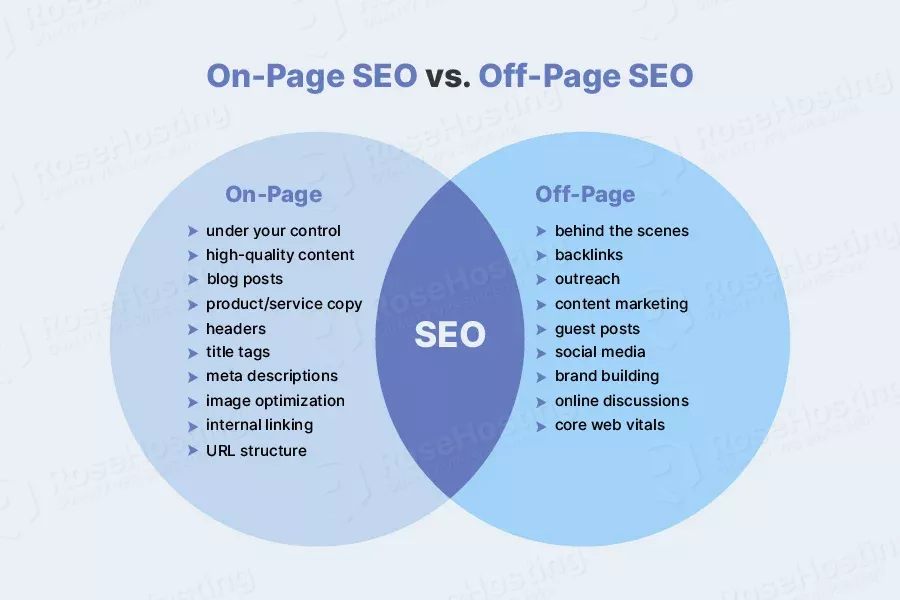IoT On-Page vs. Off-Page SEO: You Need To Know
Navigating the digital world for your Internet of Things (IoT) business can feel complex. Consequently, you need a clear map to success. Essentially, that map is a strong SEO strategy. However, this strategy has two core parts: On-Page and Off-Page SEO. Understanding their unique roles is crucial for your visibility.
Think of it this way: your on-page SEO is your digital storefront. It is what customers see when they find you. In contrast, your off-page SEO is your reputation around town. It is what people say about you when you are not in the room. Ultimately, you need both a great store and a great reputation to thrive.
This guide will break down both types specifically for IoT. Therefore, you will learn exactly how to optimize your website and build your authority. Let’s dive in.

Part 1: Mastering Your Digital Storefront: IoT On-Page SEO
First, we will focus on On-Page SEO. This involves everything you directly control on your own website. For IoT companies, this is where you explain complex tech in simple terms.
If you want to read about Google SEO, click here.
Keyword Research: Speaking Your Customer’s Language
To begin, you must use the words your customers use. For instance, do not use “ambient intelligence hub.” Instead, use “smart home controller.” People search for solutions, not just technical terms.
- Actionable Tip: Specifically, use tools like Ahrefs. Find question-based keywords like “how to connect a smart plug.” These long-tail phrases are incredibly valuable.
Creating Crystal-Clear Content
Furthermore, your content must educate first and sell second. IoT products often need explanation. So, become a teacher for your potential customers.
- Write Detailed Guides: For example, create a “Complete Guide to Smart Home Security.”
- Develop Simple Tutorials: Additionally, make step-by-step setup videos. Answer every common question proactively.
- Showcase Case Studies: Similarly, prove your product’s value with real-world success stories.
Technical SEO: Your Website’s Unseen Engine
Moreover, your website must be fast and functional. If it is slow, people will leave immediately. Therefore, technical health is non-negotiable.
- Maximize Page Speed: Compress all images. Also, use a fast web host. A one-second delay hurts your rankings.
- Ensure Mobile-Friendliness: Since people use phones to control devices, your site must work perfectly on mobile.
- Implement Schema Markup: This is a powerful tool. By adding this code, you help search engines understand your content. As a result, you often get richer search results.
Part 2: Building Your Hype: IoT Off-Page SEO
Now, let’s talk about Off-Page SEO. This is all about building your brand’s reputation across the internet. It is the digital word-of-mouth that builds trust.
The Power of Quality Backlinks
Primarily, you need backlinks. These are links from other websites to yours. Think of them as votes of confidence. However, quality always beats quantity.
- Get Featured in Tech Blogs: Aim for sites like TechCrunch or IoT For All.
- Collaborate with Influencers: Send your product to a trusted tech reviewer on YouTube. An honest review provides a powerful, contextual backlink.
- Write Guest Articles: Contribute expert posts to industry blogs. For example, a smart lock company could write for a home security blog.
Leveraging Digital PR and Social Proof
Additionally, you should actively work on getting mentions in the news. Do not just pitch your product; pitch a story.
- Actionable Tip: Conduct a unique survey on IoT trends. Then, publish the data and share it with journalists. This often leads to high-value links and mentions.
Finally, manage your online reviews. Encourage happy customers to post on Google and G2. Positive reviews directly influence buying decisions and build local trust.
The Perfect Partnership: How On-Page and Off-Page Work Together
Crucially, on-page and off-page SEO are not separate. They work together in a powerful cycle.
Imagine you publish a fantastic, well-optimized blog post (on-page SEO). Then, an influencer finds it and links to it (off-page SEO). This tells Google your content is valuable. Consequently, your ranking improves. As a result, more people see your post, and more sites may link to it. Essentially, your on-page content is the “party,” and your off-page efforts are the “invitations.”
Your Roadmap to IoT SEO Success
In conclusion, a successful IoT SEO strategy requires both a flawless foundation and a stellar reputation. First, build an incredible, user-friendly website. Then, promote it to build authority and trust. Remember, consistency is your greatest asset. Keep publishing great content. Keep building relationships. Soon, you will see your connected business grow.
Frequently Asked Questions (FAQ)
Q1: For a new IoT startup, which SEO type is more important?
You must start with on-page SEO. Without a well-optimized website, there is nothing valuable for others to link to. Therefore, build your foundation first, then focus on promotion.
Q2: How can I find the right influencers in the IoT space?
Start by searching YouTube for reviews of products like yours. Also, check who is sharing popular IoT news on Twitter and LinkedIn. Then, engage with their content before you ever send a pitch.
Q3: What is a common on-page SEO mistake for IoT sites?
Often, they use too much technical jargon. Instead, you should always use simple language that solves a customer’s problem. Speak to the user, not to your fellow engineers.
Q4: How long does it take to see SEO results?
Typically, SEO is a long-term strategy. You might see small wins in 3-6 months. However, significant traffic growth often takes 12 months or more. Patience and persistence are absolutely key.
Q5: Is local SEO important for a global IoT brand?
Yes, but in a specific way. For example, if you have a physical office, it helps with recruitment and partnerships. Additionally, for B2B companies, targeting specific business districts or tech hubs can be very effective.
